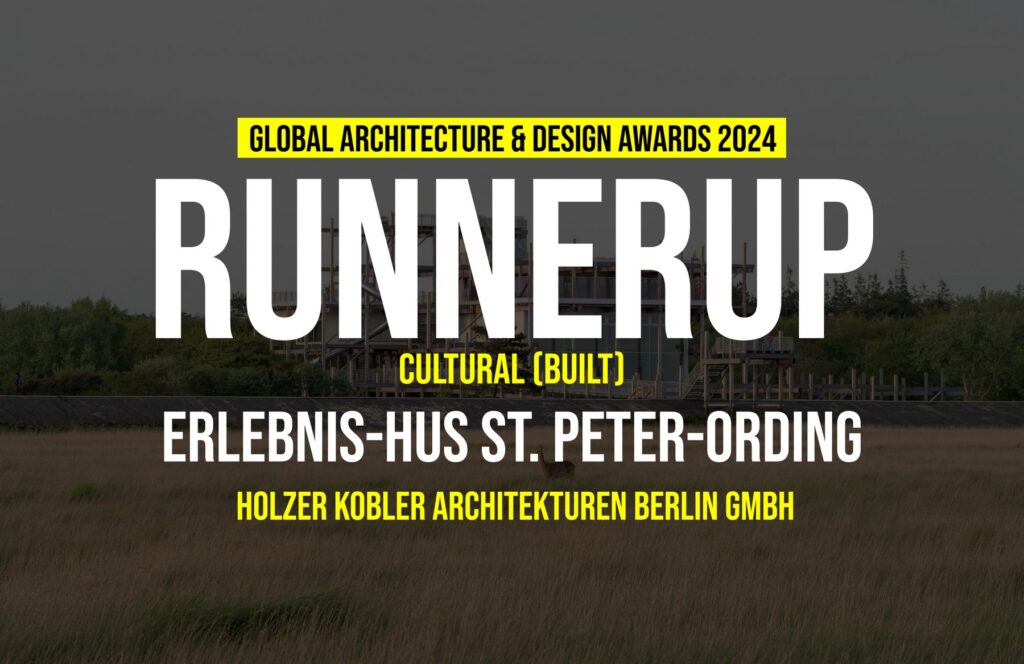The new Erlebnis-Hus in St. Peter-Ording marks the culmination of the expanded beach promenade as part of a landscape project that emerged from a competition win in collaboration with the landscape architects Uniola. It aims to serve visitors of all ages and backgrounds as an inclusive meeting point, deeply rooted at a local level in both form and function, while radiating a strong regional identity.
Global Design & Architecture Design Awards 2024
Second Award | Cultural (built)
Project Name: Erlebnis-Hus St. Peter-Ording
Category: Cultural (built)
Client: Tourismus-Zentrale St. Peter- Ording, 25826 St. Peter-Ording Katharina Schirmbeck
Design Period: April 2017 – September 2020
Construction Period: April 2021 – Juni 2023
Address: Fritz-Wischer-Straße 1, 25826 St. Peter-Ording, Germany
Photography: Jan Bitter
The construction is inspired by the local pile construction methods. It consists of an exposed load-bearing structure made of laminated timber, within which five oversized solid wood cubes are inserted at various heights and positions. The project’s task was to find a sustainable, ecological, and innovative solution, contributing to the attractiveness of the location, both from a tourism and societal perspective.
Each of the five cubes of the structure serves a distinct purpose: they house an analog game venue, an information center + shop, a restaurant, a staff office, and sanitary facilities. The individual cubes are enclosed on three sides with a suspended wooden facade and open on one side with oversized windows, providing impressive views of the sea, the adjacent biotope, the promenade, and the distant landscape.
A large number of terraces and stairs make the building accessible and usable on multiple levels outdoors, while a reinforced concrete core with an elevator and infrastructure rooms stabilize the emblematic wooden structure. Play equipment integrated into the wooden sculpture invites visitors to interact with the building and encourages them to play in, on, under, besides, and around the house.
